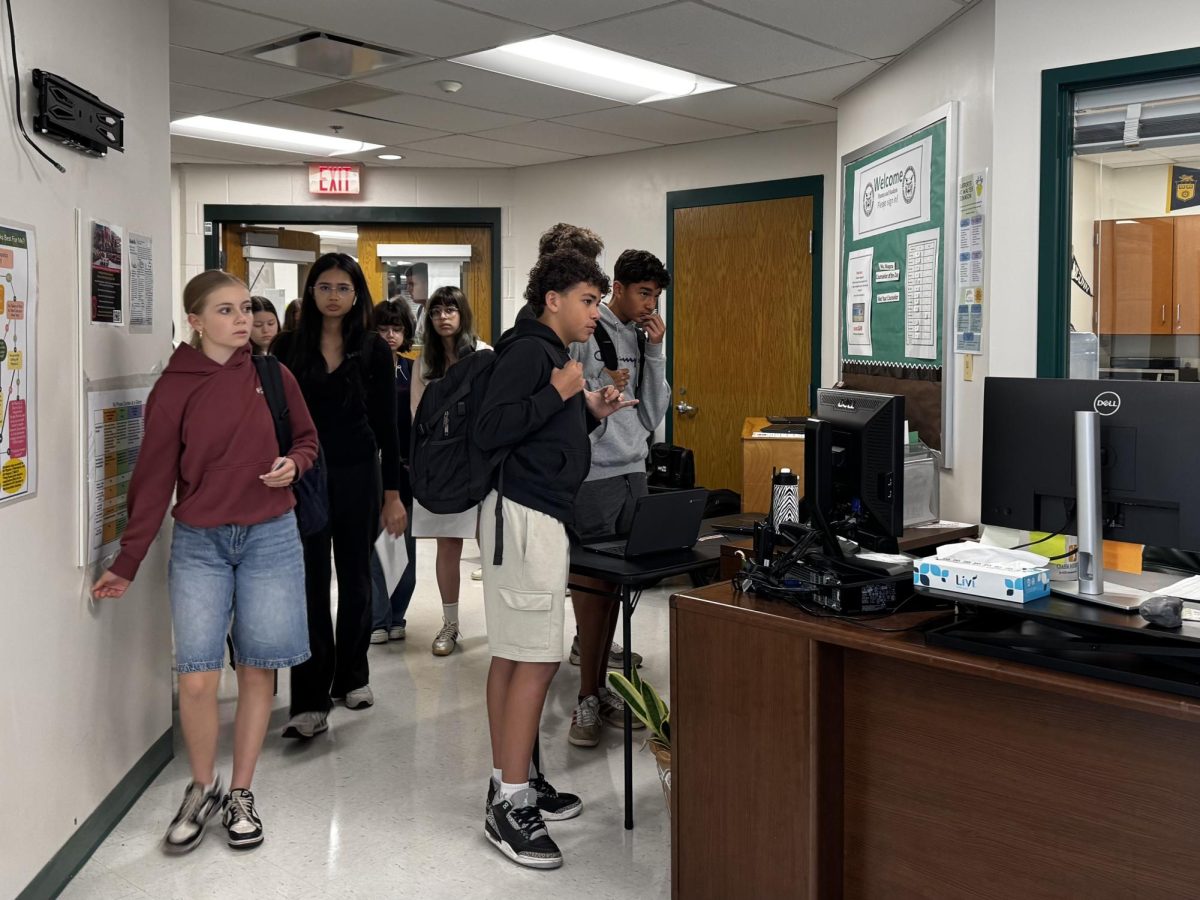Markers hit the colorful poster paper as students chat at their tables, choosing designs and planning their execution. A familiar scene, yet to both students and teachers it seems to be happening less and less frequently. Artistic projects offer an alternative to the standard reading, writing and problem-solving that is expected of typical school assignments. They are an opportunity to engage with the material in new and interesting ways, so why have they been paced out of teaching?
“I think that in some ways everyone having a Chromebook has stripped some of the ‘Let’s get out glue sticks, pens, pencils and create’ spirit, to the point where I worry that trying to do something like that is almost eye roll inducing, like ‘Dude we’re not in elementary school.’ I didn’t used to get that from students,” history teacher Jeremy Butler said. “I know that you can create art on the computer, but I sometimes feel [like] if I want to get something done that’s not on the computer, I have to hype it up. ”
On some level, Butler’s observations are true. Posters have turned into PowerPoints or Google Slides and artistic products have turned into blog posts. While these projects may be more applicable to the professional world, they are often devoid of the personal freedom and creativity that originally made them enjoyable to many.
“Middle school was definitely a lot more creative work, posters and all of that. I don’t see as many now, I think it’s a rare thing. However, I understand that people have so much more homework in high school and the projects really aren’t for everyone,” junior Ziqing Chu said.
While there is speculation on the reasons for this shift, students seem to be in agreement: they oppose it.
“I don’t think we do [artistic projects] enough. I can probably count on one hand the amount of art-related projects I’ve done in high school; in middle school we did way more…it just doesn’t happen as much here,” junior Ellie Mbaye said.
Some teachers make a conscious attempt to break the often monotonous pattern of notecards and essays, but this often takes much more planning to execute properly and longer to grade. Still, many feel the cost is worth the result.
“I try to incorporate some artistic element into every unit project, simply because so many students can better express themselves visually, or through art than through words. I like giving students the option to express themselves in several different formats,” AP Psychology teacher Geraldine Acquard said.
AP Psychology is an example of a class that bucks this trend of often uninteresting assignments with creative and engaging activities that relate closely to the topic at hand. For example, students design masks to examine inner and outer aspects of personality, analyze children’s books for motivational theories and perform to persuade their teacher into giving them an A using techniques learned in class.

“Sometimes you do want to limit [students] as a teacher or coach, and say ‘don’t do this, don’t do that.’ [However,] if at all possible, I try to present all the options and I think that when you liberate people, it often brings out their best creativity. Although some people, at first, find that a little overwhelming, I try to provide examples from the past or list things to consider and hope that gets their creative juices flowing,” Butler said. “There is something to be said for just two or three options, but I don’t think you’ll get your best creativity from that. It might make it more efficient for students to decide what to do and for you to grade, but overall I’d say it’s always better to have more options.”
Creative projects not only offer a chance at entertaining students and their teachers, but also an opportunity to approach the material in a different way, one that can give many types of students an opportunity to shine.
“I definitely like art-centered projects, just because it’s a way for me to show more effort. Especially since I don’t participate as much in classes, I think it’s a good way to show the teacher that I can do a lot of things,” Chu said.
This sentiment was echoed by teachers, and it can be observed through the artistic projects that often cover their classroom walls in appreciation.
“Sometimes I think a different way of doing things liberates a student to be creative in a way that traditional education has limited or denied in some way. I love when students get creative and buy into the project, and you see a different side of them. It’s easy for us [teachers] to sometimes forget that our relationship is knowing you for 45 minutes, five times a week. It’s easy to forget [they] have a whole life and skills outside that context. Projects like that are a fun way to remind myself and for the student to remind themself there’s other ways of accessing history and the individual,” Butler said.


![A bulletin board in Jeremy Butler's room is covered with drawings and printed creations made by students. "My favorite project is the one I do each semester in both Ancient Mediterranean and Medieval History, I pick a topic and have students draw cartoons. This past semester in Ancient Mediterranean Civilizations, I picked the Odyssey [to inspire their cartoons]. They’re encouraged to be a little humorous; they don’t have to stick to the time period or script exactly as long as they know the stops. It’s fun because if their art is bad, it’s entertaining [and] sometimes it’s so bad, it’s good. Other times it’s so good, you hang [them] up [and] use them as decorations for your class," Butler said.](https://wjpitch.com/wp-content/uploads/2023/03/6aCqY9Wj5OBHW857Am6LvKy1e9okEqc8AlHFduA1-675x900.jpg)












